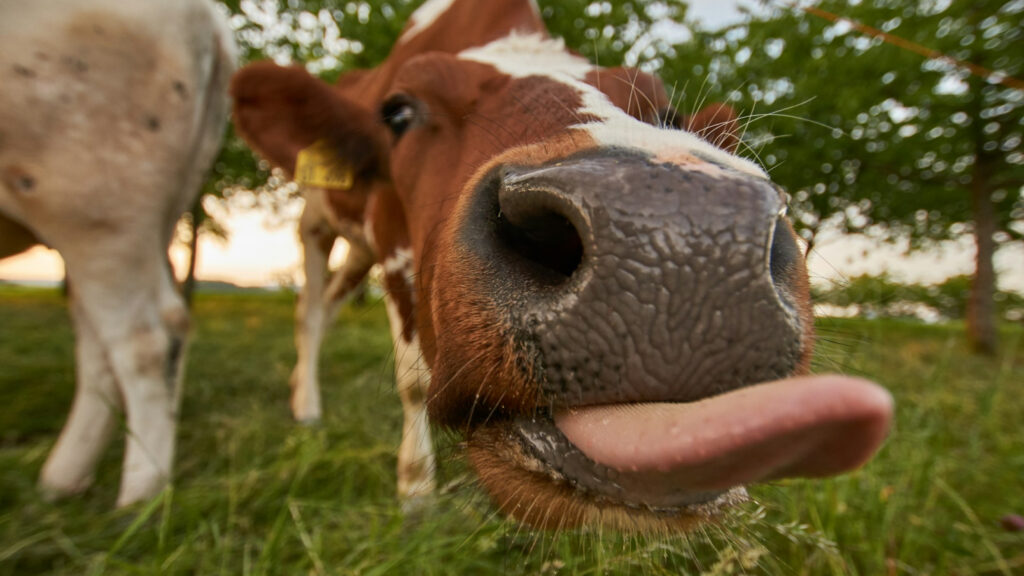
HOME / BLOG / STATISTICS
Meme Marketing Statistics 2025: 98+ Stats & Insights [Expert Analysis]
- October 16, 2025
- Bill Nash
- 4:44 pm
Memes are no longer just internet jokes — they’ve become a critical force in digital culture, marketing, and even economics. As of 2025, memes are shaping how audiences engage, how brands speak, and how attention spreads. In this data-packed guide, you’ll find the most current, researched meme statistics, expert analysis, and emerging trends for marketers, content creators, and brand strategists.
Whether you’re planning a meme campaign or simply want to understand how memes influence digital behavior — this is your go-to resource.
Table of Contents
General Usage & Reach
44% of internet users aged 18–34 regularly share memes online.
75% of people aged 13–36 share memes (sending or reposting)
Among that group (13–36), 55% send memes weekly and 30% send them daily.
74% of people share memes to make others laugh.
53% use memes as responses to something.
35% send memes as a “code” (i.e. an inside-joke)
28% send memes when “words fail.”
On average, millennials view 20–30 memes per day.
38% of social media users follow dedicated meme accounts.
Instagram users share ~1 million memes per day (as of 2021).
In 2018, Instagram memes shared daily ~500,000; by 2021 it doubled.
More than 3 billion people use social media; ~60% use it to share memes or humorous content.
36% of respondents send memes to express emotion.
54% of people report sharing more political memes than before the COVID-19 pandemic.
29% of Gen Z & Millennial social media users create memes / post them.
Political memes reportedly make up ~60% (or a large share) of all memes.
Memes are sent by 74% for humor, 53% as reactions, 35% as code, 28% when words fail (restating combined stats).
44% of users aged 18–34 share memes regularly. (Repeat from #1 as widely quoted)
33% of social media users in the U.S. check memes in their daily lives.
In the U.S., 63% of internet users age 18–29 have shared memes.
Meme Culture & Evolution
The average meme lifespan (how long it remains active/popular) is ~4 months (2023) vs ~23.6 months in 2008.
From 2011–2020, memes’ complexity & entropy (content variety) increased; meme volume doubled about every ~6 months.
In a web-scale analysis, memes originating from the top 10% of communities by network centrality generate ~62% of diffusion (spread) events.
Memes with origins in more central communities tend to diffuse more widely—even accounting for size/activity.
A study of 3 million+ memes found that “core” communities, not just peripheries, tend to seed viral memes.
Memes sometimes behave like a “metalanguage,” evolving structural conventions that users implicitly understand.
Memes also accumulate “mutations” — i.e. remixes, adaptations, variants — as they circulate. (General trend)
Internet meme diffusion exhibits “rich-get-richer” dynamics: popular memes gain more exposure, making them more likely to be shared further.
Some research uses meme engagement patterns to infer personality traits or individual determinants.
Memes have been studied in machine learning contexts for sentiment, affect, and multimodal understanding.
Meme Marketing & Business Impact
Memes have ~10× more reach and ~60% higher organic engagement compared to regular marketing visuals.
Meme campaigns can deliver ~19% click-through rates (CTR), compared to ~6% for average marketing campaigns.
Meme campaigns’ CTR is ~14% higher than email marketing.
Over 60% of respondents say they are more likely to buy from brands that use memes in their marketing.
41% of U.S. consumers want brands to participate in meme culture/trends.
80% believe brands using memes appear more relatable.
Meme marketing ROI has been reported as ~60% (in early 2025).
The global “meme industry” was valued at ~$2.3B in 2020, projected to grow to ~$6.1B by 2025.
Brands such as Netflix use memes frequently (e.g. weekly) in their social media strategy.
Meme-based marketing is cheaper in production but potentially higher in impact (engagement) than traditional media. (Trend commentary)
Demographics & Behavior Patterns
Younger people are more likely to share memes than older demographics. (General)
In the U.S., 64% of 18–29-year-olds said they use memes, compared to lower percentages in older groups.
Among 30–49 year-olds, meme usage is lower; among 65+, much lower.
Meme formats differ by gender: males tend to engage more with “funny memes,” females more with “cute” or “reaction” memes (survey findings).
Women more likely than men to use Instagram / Pinterest for memes. (E.g. 33% vs 25%)
Among 13–17 year-olds, 43% follow meme accounts; among 18–20 year-olds, 56% do.
35% of Gen Z & Millennial internet users are more likely to post memes made by others (i.e. reposts) than original.
Meme creation is more frequent in certain age brackets (teens, young adults). (Trend)
Some memes originate from niche communities before becoming mainstream.
Memes travel across platforms (cross-posting, adaptation) rather than staying isolated.
Social, Political & Cultural Impacts
Memes are often used in political discourse, commentary, satire. (General)
Many “viral” social/political movements include memes as a communication vector. (Trend)
60% of memes are reported to be politics-related in some surveys.
The spread of fake news or misinformation can be accelerated via memes. (Observation)
Researchers have built models to detect harmful memes (e.g. hate, targeted) using multimodal methods.
Among ~3,500 COVID-19–related memes, they were annotated as “very harmful,” “partially harmful,” or “harmless.”
Harmful memes target individuals, organizations, communities, or general public.
Memes help spread ideas, attitudes, symbolic content across cultures (i.e. cultural memes). (General / conceptual)
Memes often serve as shorthand or symbolic commentary on social issues. (Cultural observation)
Some memes embed ideological or political messaging subtly via humor or satire. (Trend)
Technology, AI & Research
Deep learning models are increasingly used to understand meme sentiment, classification, affect.
Memes leave data trails (engagement, sharing) which can be used for inference about users (preferences, traits).
In multimodal meme detection, combining image + text performs better than unimodal approaches.
Models struggle with subtlety—understanding sarcasm, context, hidden references is hard.
Meme evolution exhibits increasing structural/semantic complexity over time.
Memes double in volume roughly every 6 months (observed in one longitudinal study).
The “entropy” (information diversity) of memes has grown, implying more varied content.
Researchers conceptualize memes as information units that evolve through mutation, selection, and replication—akin to biological memes. (Theory)
In Reddit-based meme datasets, core communities generate many influential memes.
Research continues to explore how meme spread dynamics compare across platforms and communities.
Memes & Economy / Finance
Some memes turned into NFTs; for example, “Disaster Girl” meme sold for > $573,000 in 2021.
Meme coins (cryptocurrencies inspired by memes) have grown massively; valuation expansions in 2024.
Some meme coins outpaced Bitcoin in meme “views” or cultural attention (e.g. SHIB vs BTC).
Marketing budgets now sometimes allocate to meme content or “meme teams.” (Trend)
Several brands have used memes in campaigns (e.g. Wendy’s, Coca-Cola).
Doing Things Media (a meme/pop culture media company) operates 35+ meme accounts with ~75 million followers collectively.
Meme content as part of marketing is a growing expenditure (digital media budgets).
Memes can contribute to brand awareness, relatability, and viral reach (qualitative outcomes). (Trend)
Negative meme campaigns (backlash, jokes at brand expense) can harm brand reputation. (Risk)
Meme virality sometimes influences stock or crypto markets (e.g. meme stock surges). (Anecdotal)
Regional / Cultural Patterns
In Brazil and Mexico, 86% and 85% respectively had shared memes in the past month.
In China, among ages 20–29, ~63% use memes; among 30–39, ~40%.
In North America, memes are especially popular in the 18–29 cohort.
In the UK, ~51% of respondents said they use memes; in France ~47%; in Germany ~42%.
Meme use and culture differ by country, platform norms, language, humor patterns. (Trend observation)
Platforms in different regions see meme adaptation (e.g. WeChat memes, local references). (Trend)
Some memes are hyper-local (in-jokes for certain language / culture). (Observation)
Meme diffusion across boundaries is influenced by language, translation, adaptation. (Trend)
Meme communities may cluster by region, language, culture. (Trend)
Some memes lose meaning when transplanted across cultural contexts. (Observation)
Memes in Practice & Anecdotes
The “Spiders Georg” meme satirizes a myth that people swallow 8 spiders per year; the meme became widespread on Tumblr.
“Spiders Georg” was remixed into variants (e.g. “Who’s eating all the spiders?”) to mock overstatements of averages.
Some memes go “viral overnight” and die quickly; others mutate and last longer. (Anecdotal / observed)
Meme pages/networks sometimes monetize through sponsorships, ads, merch. (Trend)
Meme creators sometimes become influencers or content brands in their own right. (Trend)
Memes often reference pop culture (movies, games, TV) to leverage shared knowledge. (Observation)
Meme formats often recycle (e.g. “distracted boyfriend,” “two-button,” “change my mind”) with new captions. (Practice)
Some memes are intentionally “meta” — jokes about memes themselves (meme culture). (Observation)
Meme formats evolve (still images, GIFs, short videos, Reels) as platforms change. (Trend)
Memes provide a form of “cultural shorthand” for shared feelings, making them efficient for remote / digital communication. (Conceptual)
Ready to Grow Your Business?
At Marketing LTB, we specialize in helping businesses like yours thrive online. From strategic digital marketing and branding to web development and social media management, we offer the tools and expertise to elevate your brand and drive real results.
Let’s build something amazing together, get in touch with us today!

About Marketing LTB
Marketing LTB is a full-service marketing agency offering over 50 specialized services across 100+ industries. Our seasoned team leverages data-driven strategies and a full-funnel approach to maximize your ROI and fuel business growth. Discover how our expertise can drive revenue for your business>

About the author, Bill Nash
Bill Nash is the CMO of Marketing LTB with over a decade of experience, he has driven growth for Fortune 500 companies and startups through data-driven campaigns and advanced marketing technologies. He has written over 400 pieces of content about marketing, covering topics like marketing tips, guides, AI in advertising, advanced PPC strategies, conversion optimization, and others.
